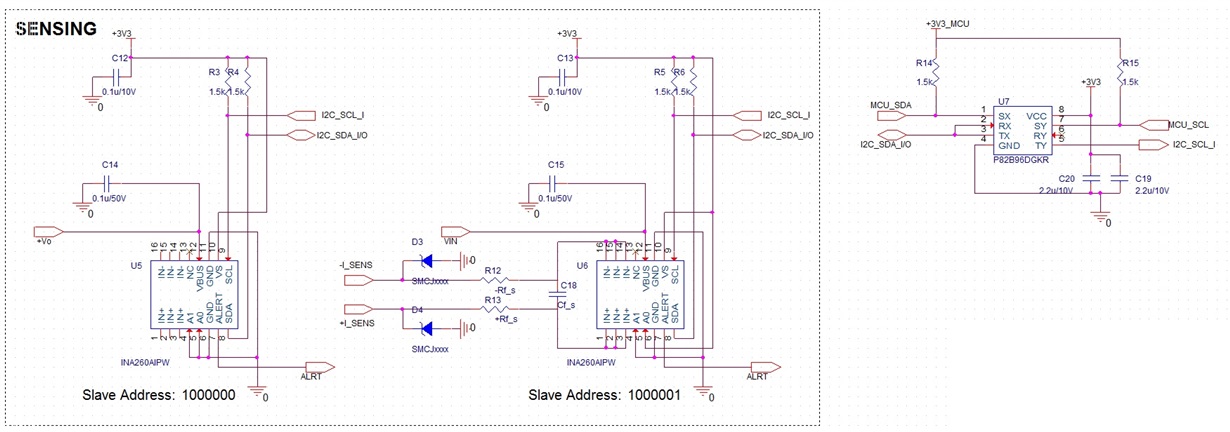Other Parts Discussed in Thread: SN74LVC2G06, SN74LVC07A, , TCA9517A, INA260, ISO1540
Hello!
I'm new in this I2C technology and I'm trying to assemble a voltage/current sensor (input voltage of the system U5 and voltage/current of the DC/DC converter U6).
The MCU will be the launch board F28377S and I observed that the I2C has no pull-up resistors on it. I just want to do the design as tight as possible and avoid the use of the buffers as SN74LVC2G06 and SN74LVC07A.
I found that the P82B96 can do the trick in a single package. But I doubt to tie the RX/TX (the datasheet said there is no problem), but then, how is it managed the bidirectionality in that line?
Any feedback is welcome, thank you.



